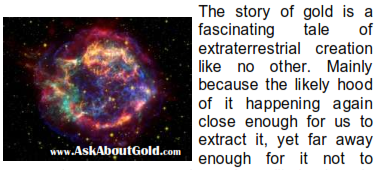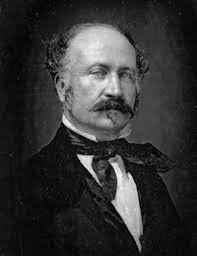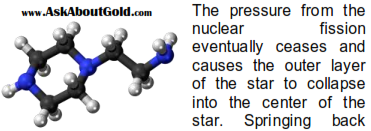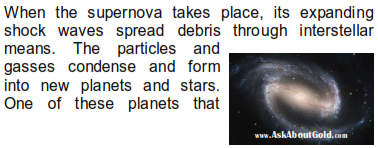The Creation of Gold

cause damage to our planet is unlikely. It only happens after millions of years of the right conditions within a star, causing chemical reactions that have never been witnessed on earth.

Johann Sutter
The stars must be made up mostly of hydrogen and contain an immense gravitational pull. The material begins to compress which triggers a process called nuclear fission. This activity resonates energy levels from the hydrogen which makes the star’s shine. After millions of years of this, the hydrogen gradually transforms into heavier elements such as helium, oxygen, and carbon. Through chemical bonding, the elements continue to transform with more speed into elements like iron and nickel.

from the sudden surge of energy, the star explodes forming neutrons which are then taken control of by the iron group elements. Particles of the iron group elements gain multiple neutrons forming even heavier elements including gold.

formed in one particularly massive supernova was earth. However, most of the gold on earth sunk into the core with molten iron. The gold found in the earth's crust came from a devastating meteor shower caused from an another supernova that took place more than 3.8 billion years ago. Over time the gold left by the meteoroids became embedded in the earth's crust by the movement of earth's crust.







